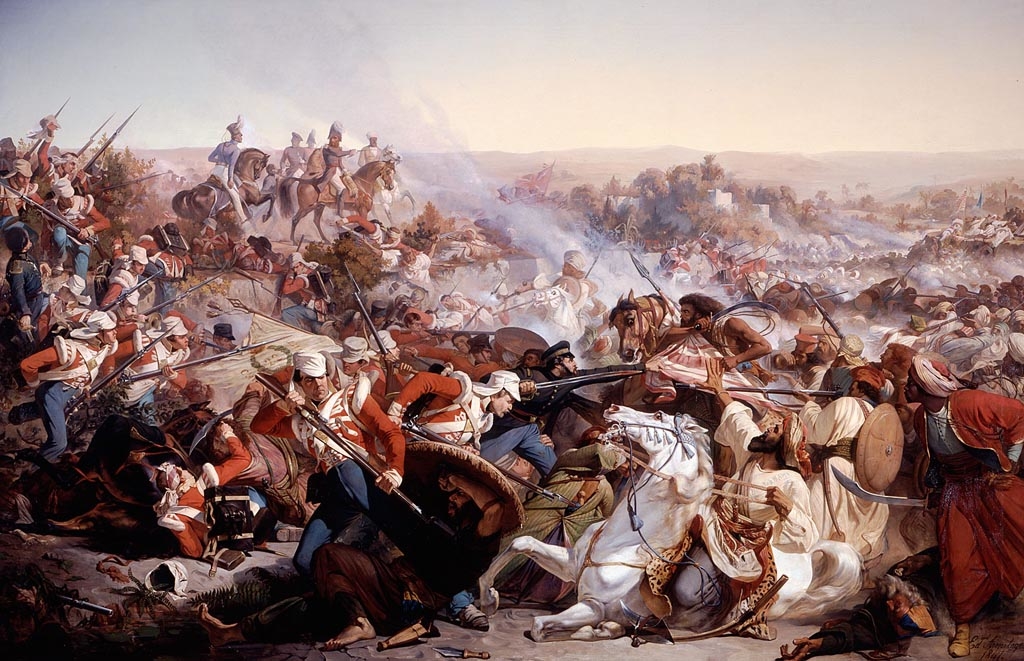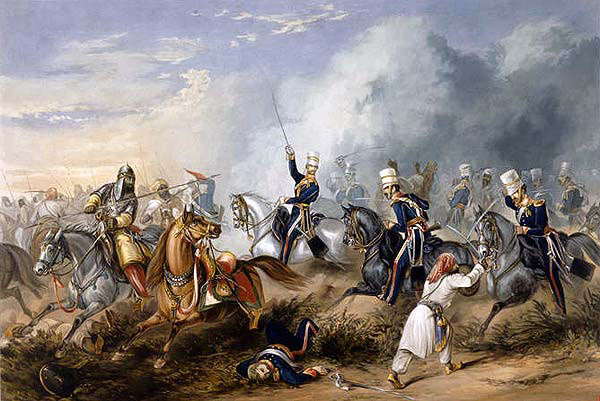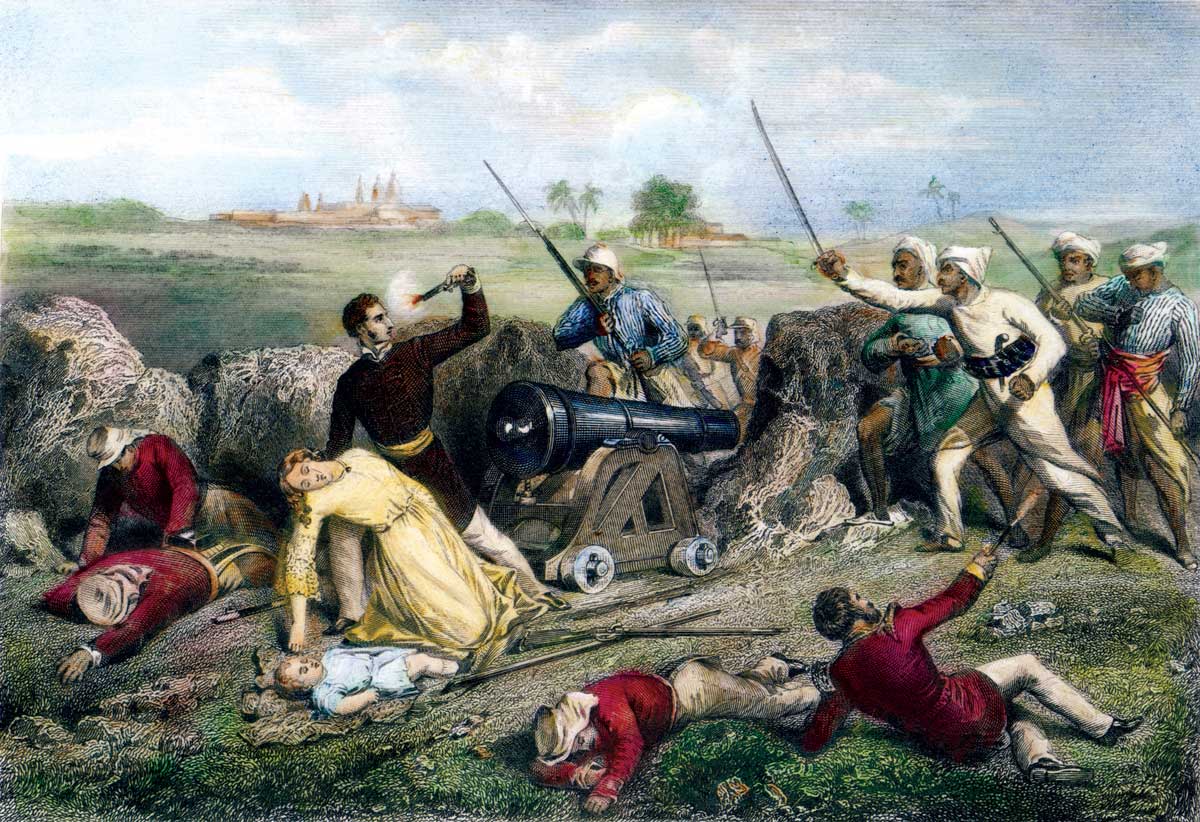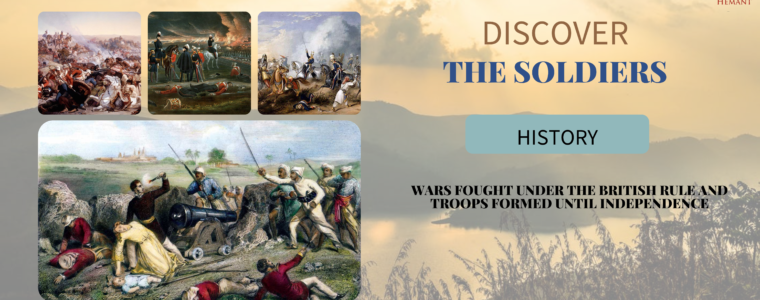Heavily influenced by the British East India Company, Indian locals continually felt compelled and oppressed. Through different political strategies, British forces would frequently assume command over the land from Indian authorities. The doctrine of lapse got land for the British when a native ruler was incompetent or passed away without a male successor. Besides the fact that the land was taken away, the way of life and the culture was also compromised. Christian missionaries frequently attempted to convert the Hindu and Muslim population that triggered a breaking point. Indian troopers, called sepoys, were given bullets by British authorities for biting off the bullet casings, lubed with fat, believed to be either pig or cow fat.
Using cow fat conflicts with the teachings of Hinduism, and using pig fat is against Islamic standards. The insult triggered uprisings by Indian sepoys against British officials. The initial rebels acquired the Indian territory in Delhi, and the British East India Company gave way for establishing British Raj that had better and bigger control over the nation.
Battle of Miani

The battle between the Bombay Army under the East India Company was fought under the command of Charles Napier and the Baluch Army. The battle took place in 1843 at Miani, Sindh that is now a part of the modern-day Pakistan. The British forces captured the Sindh region that became the first territorial possession by the British East India Company.
First Anglo-Sikh War

The war between the Sikh Empire and the British East India Company was the first war fought in Ferozepur District in Punjab in 1845 and 1846. Maharaja Ranjit Singh expanded the Sikh Kingdom at the same time when British-ruled territories advanced to seizure areas beyond Punjab borders. The king’s move to maintain a friendly relation with the British, while simultaneously enhancing his military forces to control British aggression and trigger a war against the Afghans.
His death prompted the British to strengthen its military forces and establish a military cantonment at Ferozepur, rising tensions that eventually lead to the outbreak of war.
Second Anglo-Sikh War

The war was a result of the growing conflict between the Sikh Empire and the British East India Company. Lord Dalhousie was the Governor general of India who led the onslaught in 1848 and 1849. The war disintegrated the Sikh Empire, and the North-West Frontier Province was formed in Punjab.
Indian Rebellion of 1857

This movement marked a major uprising in India against the British East India Company in 1857 and 1858. It functioned as an independent power on behalf of the British Crown, and began revolts forming a mutiny of sepoys in Meerut. The mutiny expanded into several other mutinies, and moved into the upper Gangetic plain and central India.
The effects of the war were also felt in the farther North and Eastern parts of the country. The revolt posed a serious threat to British power, and was contained by defeats in Gwalior in 1858. The British also pardoned innocent rebels, but didn’t formally free the hostilities until July 1859. The was is also called as:
- The Sepoy Mutiny
- The Indian Mutiny
- The Great Rebellion
- The Revolt of 1857
- The Indian Insurrection
- The First War of Independence
Armies of the East India Company
The East India Company operated three presidencies; Bengal, Bombay, and Madras, each maintaining its own army. These presidencies expanded from the early 1970s, and spread rapidly following the onset of the Anglo-French war.
The Bengal Army became the largest and the most influential of the three forces, and its commander-in-chief was also the senior Military figure in India. The British Army units were attached to all the tree armies where the Crown lent them during times of need.
The Indian Troops of the East India Company comprised of infantrymen functioning exclusively under the command of European officers. Hence, each presidency, including every territorial unit had a significant number of European units that consisted of infantry and gunners forming the core of the military strength.
Between 1763 and 1805, there was a phenomenal increase in the number of troops, and the Bengal Army expanded from 6,680 to 64,000 men. Likewise, the Madras Army grew from 9,000 to 64, 000, and the Bombay Army strengthened from 2,550 to 26,500.
While all three presidencies had a commanding officer, the officer who commanded the Bengal Army was also the commander-in-chief.



